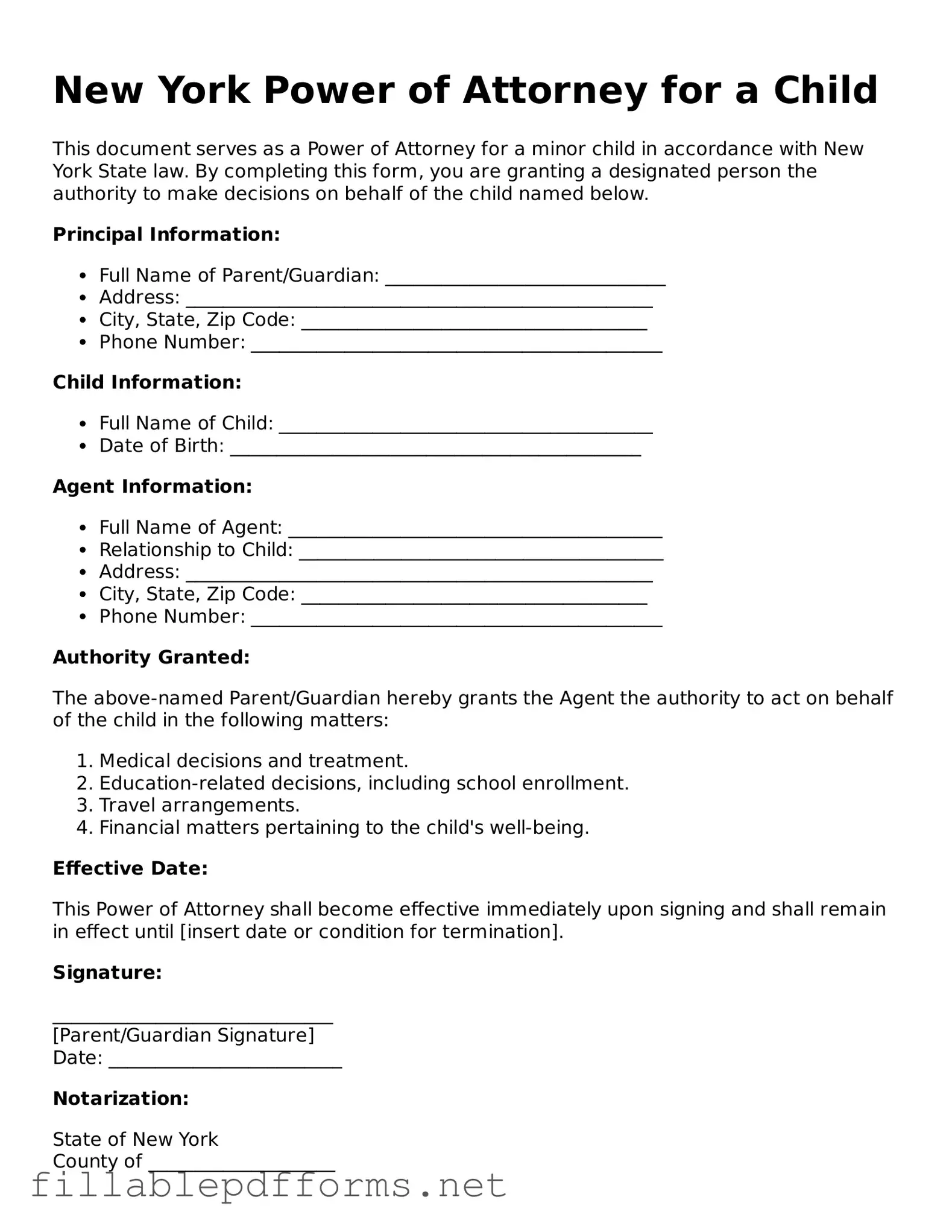Attorney-Verified Power of Attorney for a Child Form for New York State
The New York Power of Attorney for a Child form is a legal document that allows a parent or guardian to grant another adult the authority to make decisions on behalf of their child. This form is particularly useful in situations where the parent is temporarily unavailable, such as during travel or medical emergencies. Understanding how to properly use this form can help ensure that your child's needs are met when you cannot be there to oversee them.
Launch Editor Here
